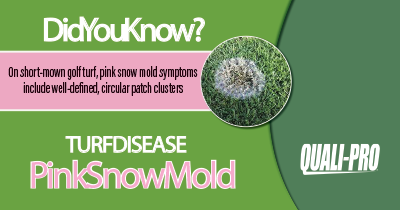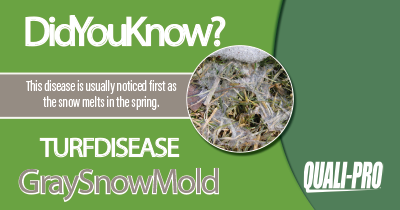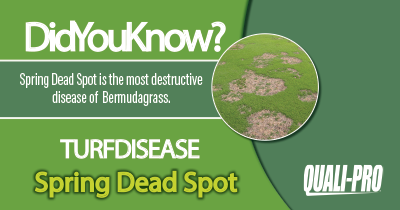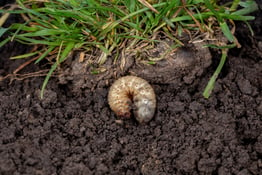Unsure of which disease you are dealing with? Here we provide images and characteristics that best describe Pink Snow Mold, Grey Snow Mold and Spring Dead Spot to better help you identify and control unslightly disease on your turf.

Pink snow mold is a disease that may affect all cool-season turfgrasses, but appears to be most damaging to creeping bentgrass and annual bluegrass on golf courses. The disease is caused by a fungal pathogen, Microdochium nivale, that blights leaves but is not reported to affect roots and crowns. Snow is not required for the development of this disease.
On short-mown golf turf, pink snow mold symptoms include well-defined, circular patch clusters. On creeping bentgrass greens, streaks of off-colored turf that follow the green’s surface drainage patterns may appear during the spring. During cool, wet conditions, white-pink mycelium may be observed on infected leaf blades.

Gray Snow Mold disease occur during winter and/or late spring under snow cover. Gray snow mold disease affect turfgrasses in northern United States.
This disease is usually noticed first as the snow melts in the spring. It is commonly found in those turf areas of greatest snow accumulation, such as along driveways or over the brink of a hill where snow drifts tend to accumulate. The most notable symptoms are white crusted areas of grass in which blades are dead, bleached, and matted together. These bleached areas range from several inches to several feet across. The chief diagnostic feature of gray snow mold is the presence of hard pinhead-sized fungal bodies called sclerotia. These light to dark brown sclerotia are embedded in the leaves and crowns of the infected grass plants.

Spring dead spot (SDS) is the most serious disease of bermudagrass and is caused by any of three closely related fungal pathogens in the genus Ophiosphaerella. SDS is a root disease that kills individual plants, thins turf stands, and increases vulnerability to weed infestation. Outbreaks tend to be more severe on intensively maintained bermudagrass on golf courses and athletic fields.
SDS forms well-defined circular patches of blighted turf that begin to appear as bermudagrass emerges from dormancy in the spring. Leaves of affected plants exhibit die-back symptoms — that is, leaf decay begins at leaf tips and progresses toward the crown. As infection progresses, roots and stolons turn black.

